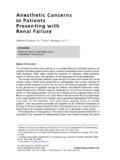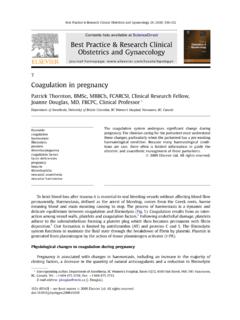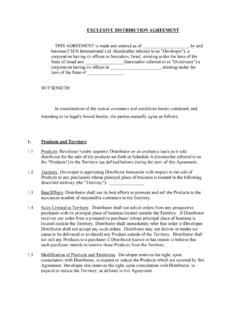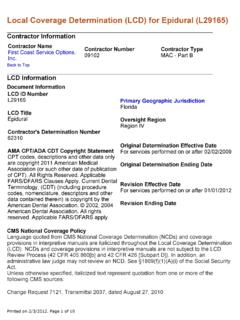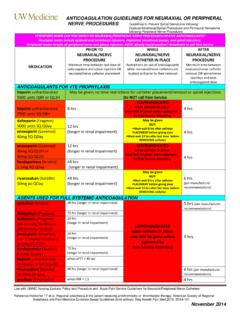Transcription of SUBDURAL BLOCK AND THE ANAESTHETIST - CSEN
1 SUBDURAL BLOCK AND THE ANAESTHETIST Anaesthesia and Intensive Care, 2010,Vol 38, No. 1 D Agarwal, M Mohta, A Tyagi, AK Sethi Department of Anaesthesiology and Critical Care, University College of Medical Sciences and Guru Teg Bahadur Hospital, Delhi, India SUMMARY There are a number of case reports describing accidental SUBDURAL BLOCK during the performance of subarachnoid or epidural anaesthesia. However, it appears that SUBDURAL drug deposition remains a poorly understood complication of neuraxial anaesthesia. The clinical presentation may often be attributed to other causes.
2 SUBDURAL injection of local anaesthetic can present as high sensory BLOCK , sometimes even involving the cranial nerves due to extension of the SUBDURAL space into the cranium. The BLOCK is disproportionate to the amount of drug injected, often with sparing of sympathetic and motor fibres. On the other hand, the SUBDURAL deposition can also lead to failure of the intended BLOCK . The variable presentation can be explained by the anatomy of this space. High suspicion in the presence of predisposing factors and early detection could prevent further complications.
3 This review aims at increasing awareness amongst anaesthetists about inadvertent SUBDURAL BLOCK . It reviews the relevant anatomy, incidence, predisposing factors, presentation, diagnosis and management of unintentional SUBDURAL BLOCK during the performance of neuraxial anaesthesia. Central neuraxial blockade is a commonly performed anaesthetic technique1. While generally being a very reliable technique, occasionally an unexpectedly high or low level of BLOCK is achieved. This could potentially be secondary to the deposition of local anaesthetic in a meningeal plane other than that desired.
4 One such plane is the SUBDURAL space, which lies between the dura and arachnoid mater. Unintentional injection of local anaesthetic into the SUBDURAL space has been seen to result in both a wide dermatomal spread2-7 as well as an inadequate block8,9. Though there are numerous published case reports of unintentional SUBDURAL blockade, it still remains a less well recognised complication of central neuraxial blockade. It may be mistaken for an inadvertent subarachnoid injection , migration of the epidural catheter tip or an inadequate, unilateral or patchy epidural BLOCK .
5 A greater awareness of the potential for a SUBDURAL injection is important, as it requires strict vigilance and timely intervention to avoid potentially critical complications and an unexpected failure of the technique. Further injection into the SUBDURAL space may potentially cause neurological damage3. The aim of this paper is to review clinical aspects of SUBDURAL BLOCK . To our knowledge, no previous detailed reviews have been published. METHODS A search from the National Library of Medicine s PubMed database was conducted up to April 2009, using the following key words: SUBDURAL , epidural, anaesthesia, regional BLOCK , complications.
6 Sixty-five relevant citations available in English were retrieved out of 189 search results. These included 45 case reports, 13 letters to editors, two editorials and five clinical studies. Out of these five clinical studies, one was a comparative study of reported cases of SUBDURAL BLOCK and two were radiological studies. The remaining two studied epidural blocks and their complications. Reference lists of relevant articles were also scrutinised. ANATOMY The SUBDURAL space is a narrow potential space between the arachnoid mater and the dura mater containing a minute quantity of serous fluid10.
7 It extends into the cranial cavity throughout the distribution of the meninges, covering all neural structures10. The space ends distally at the lower border of the second sacral vertebra, where the filum terminale becomes invested closely by the dura mater11. The spinal SUBDURAL space has greater potential capacity dorsally and laterally12. It is widest in the cervical region and most narrow in the lumbar region. The usual sparing of sympathetic and motor functions associated with a SUBDURAL BLOCK is due to the anatomy of this space13. The space is known to extend laterally like a cuff over the exiting dorsal nerve roots.
8 The arachnoid mater is fixed proximal to the dorsal ganglia and the dura mater distal to it, thereby also extending the SUBDURAL space over the dorsal root ganglia14 (Figure 1A). The dura and arachnoid mater are attached together on the ventral root and hence the potential space is much smaller ventrally. SUBDURAL injections thus usually pool in the posterior segment, sparing the anterior nerve roots that carry the sympathetic and motor nerve fibres15. Figure 1: Diagram showing extension of SUBDURAL space over A) dorsal root ganglion and B) trigeminal ganglion.
9 A greater understanding of the wide interpatient variability seen with a SUBDURAL BLOCK can be derived from knowledge of the ultrastructure of the SUBDURAL space. Using electron microscopy, the anatomy of the SUBDURAL space was observed by Reina et al16, wherein the arachnoid mater had an outer compact laminar portion attached to the inside of the dural sac and a separate inner trabeculated portion. Between the laminar arachnoid portion and the dura, a compartment termed the dura-arachnoid interface was seen (Figure 2). This dura-arachnoid interface was seen to be composed of neurothelial cells having relatively few intercellular joints and large intercellular lacunae filled with an amorphous material.
10 This suggested that iatrogenic dissection of this cellular plane can occur if neurothelial cells break up on application of pressure by mechanical forces such as air or fluid injection . Thus fissures can be created within the dura-arachnoid interface, with considerable variability in form16. While some fissures remain incomplete, some expand towards weaker areas creating a SUBDURAL space. Blomberg17 also documented variability in opening the SUBDURAL space under pressure in a cadaveric study. It was observed that while it is easy to open up the SUBDURAL space on injection of fluid in up to two-thirds of subjects, it may be difficult or impossible in others.

